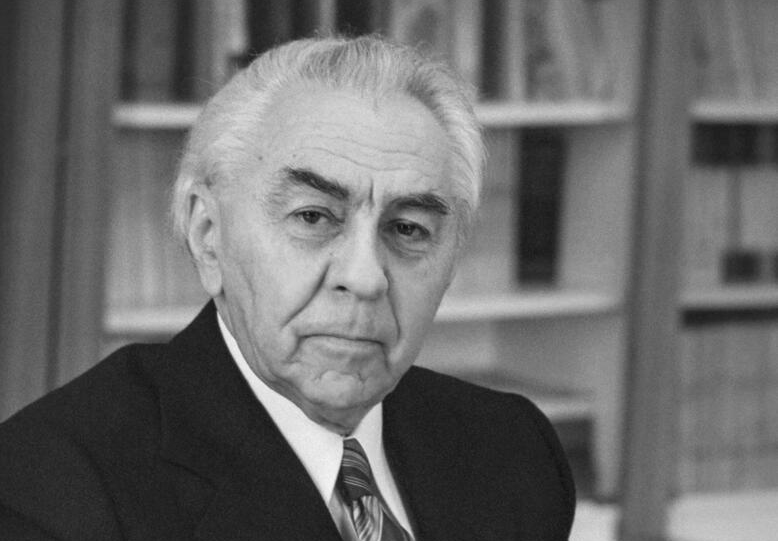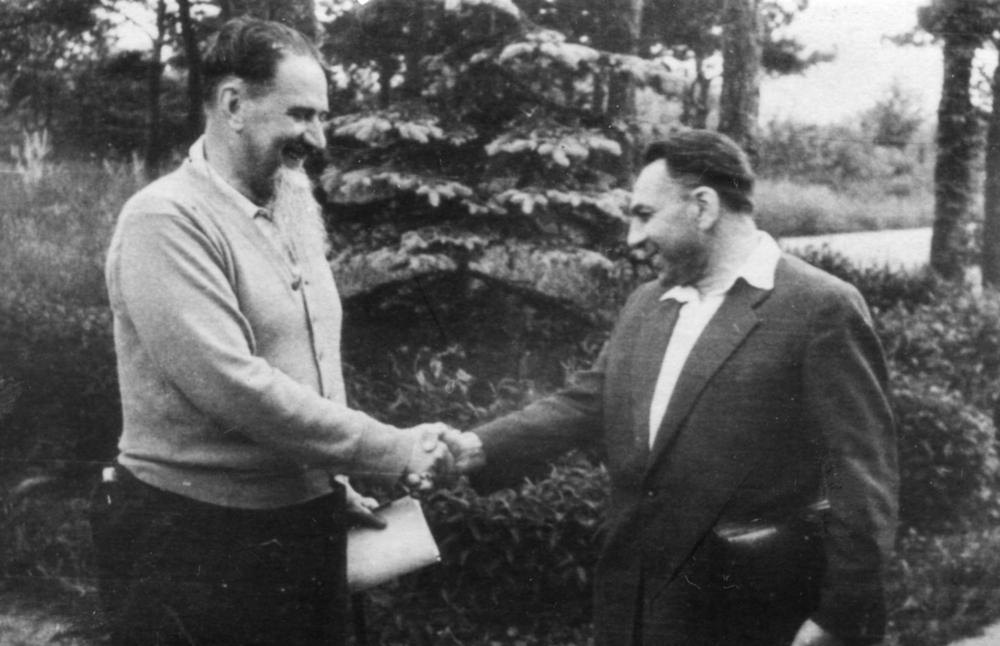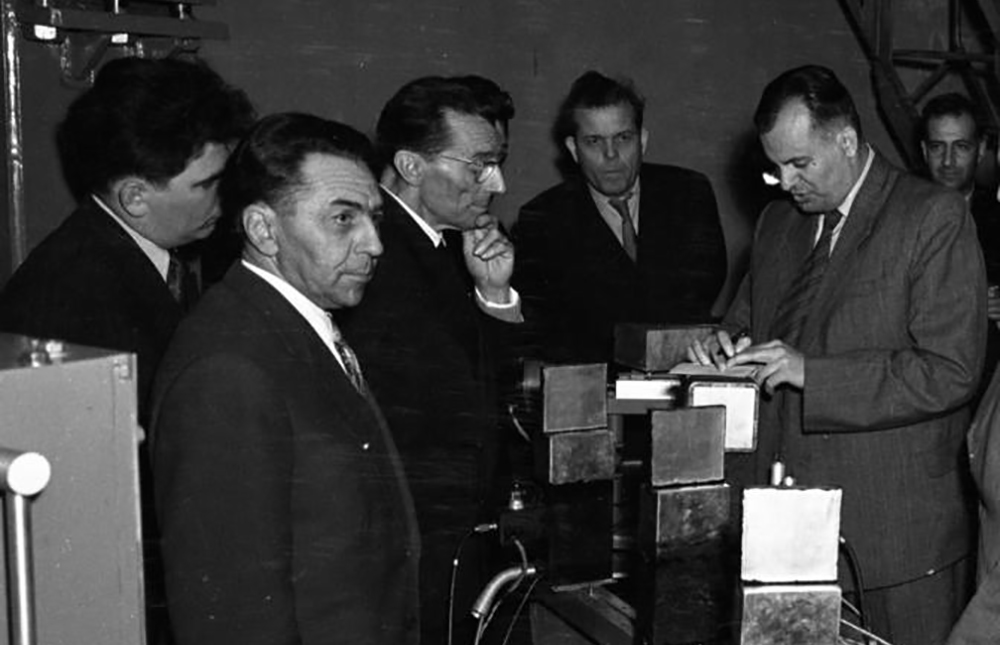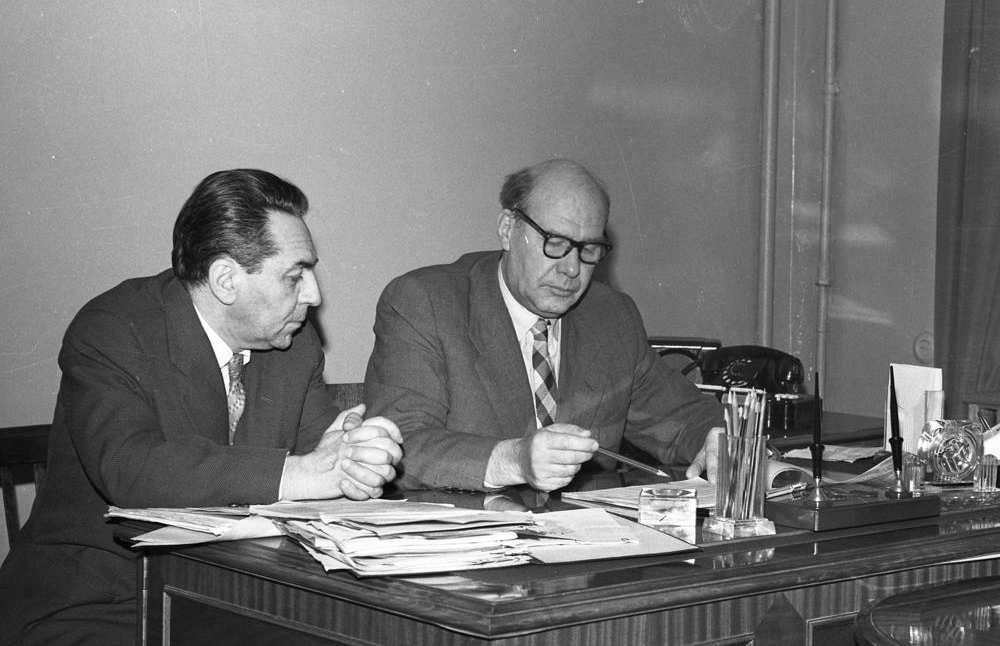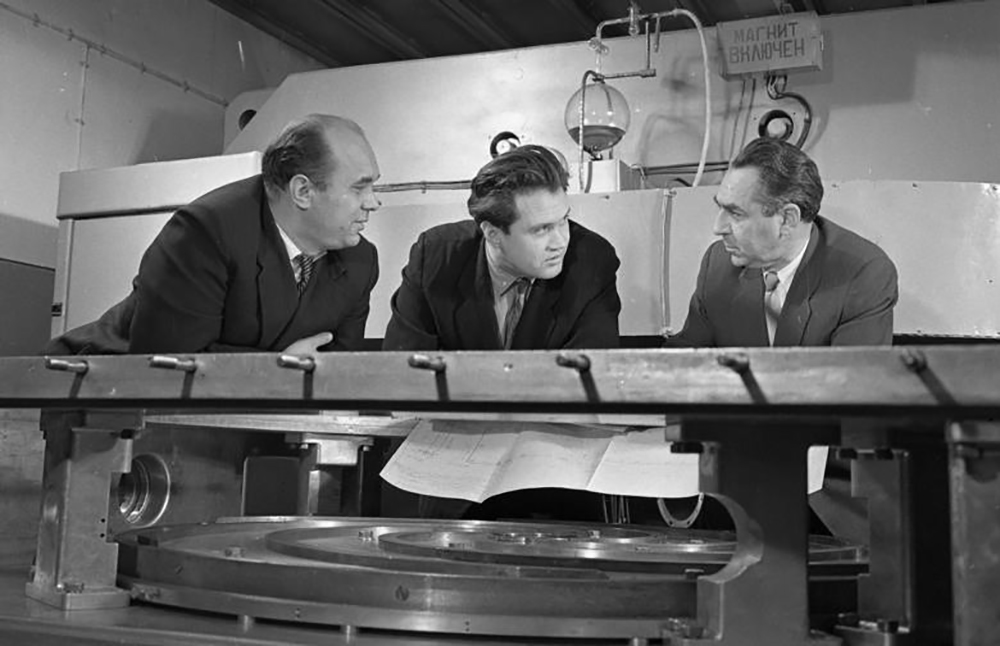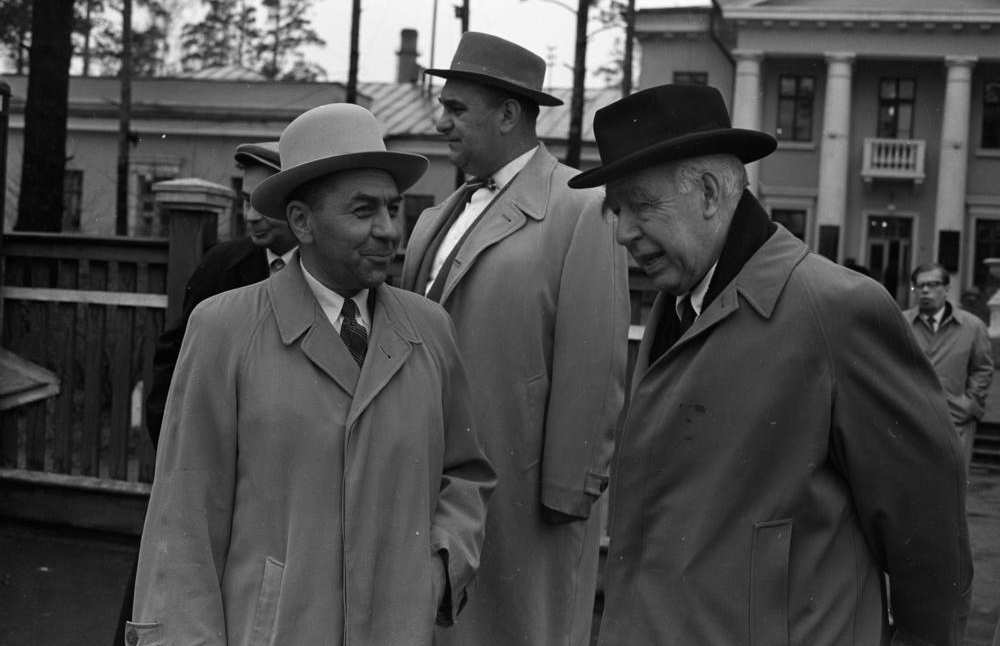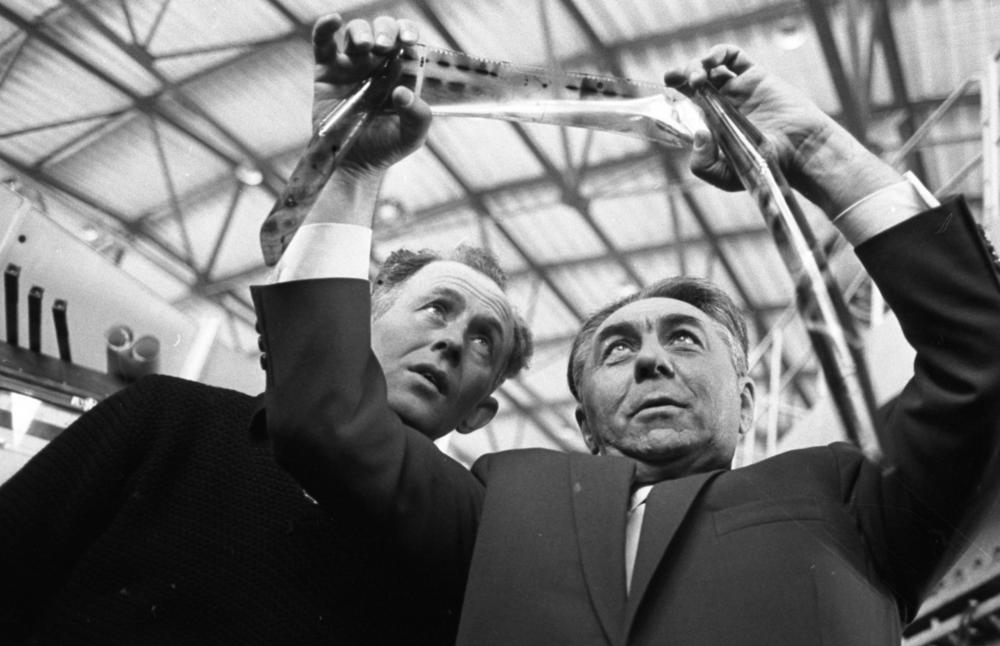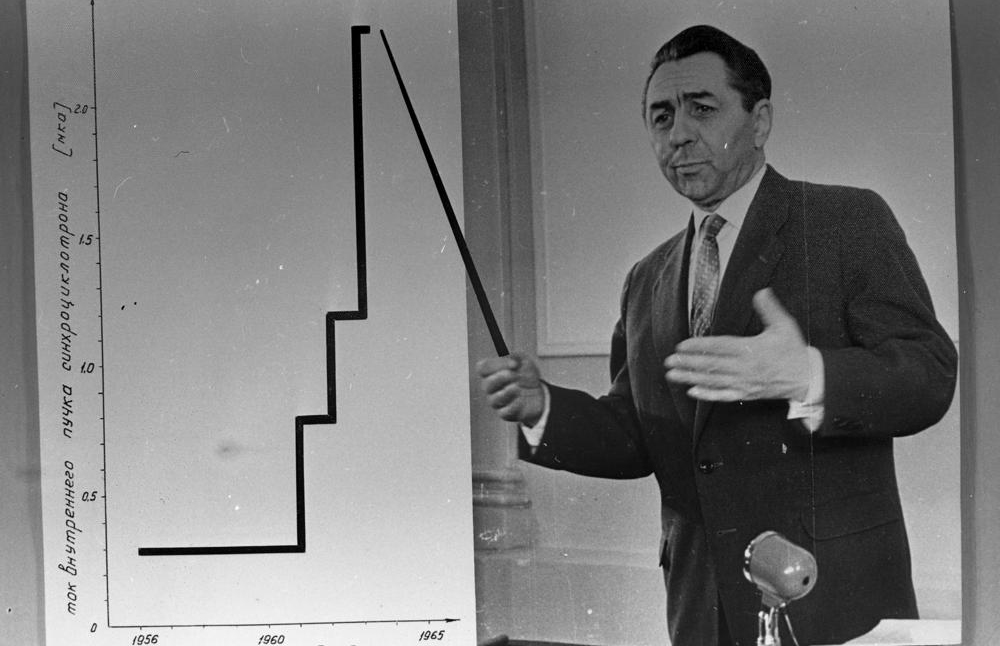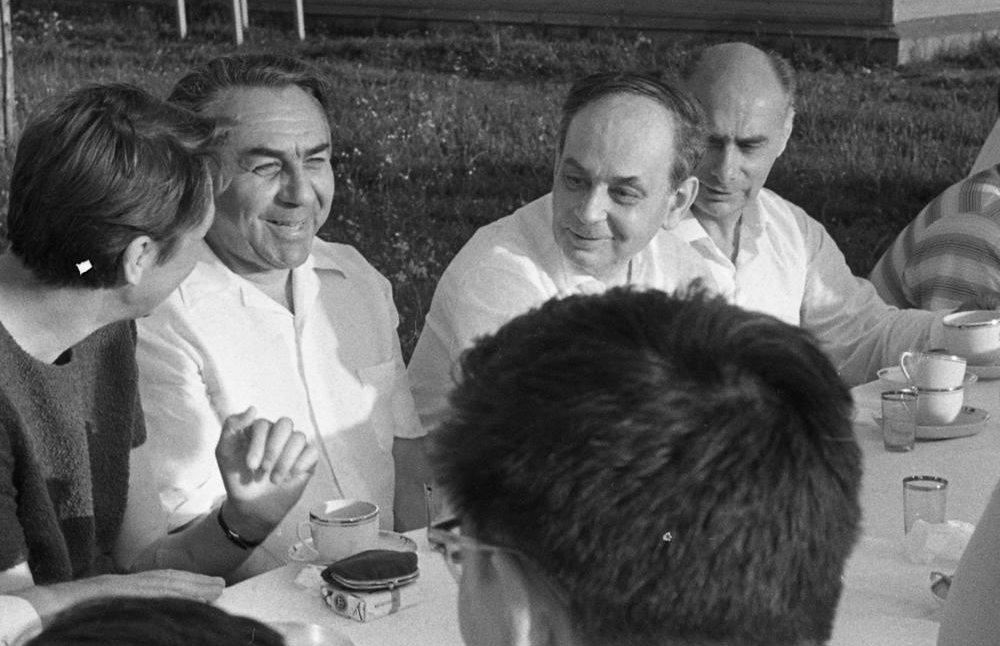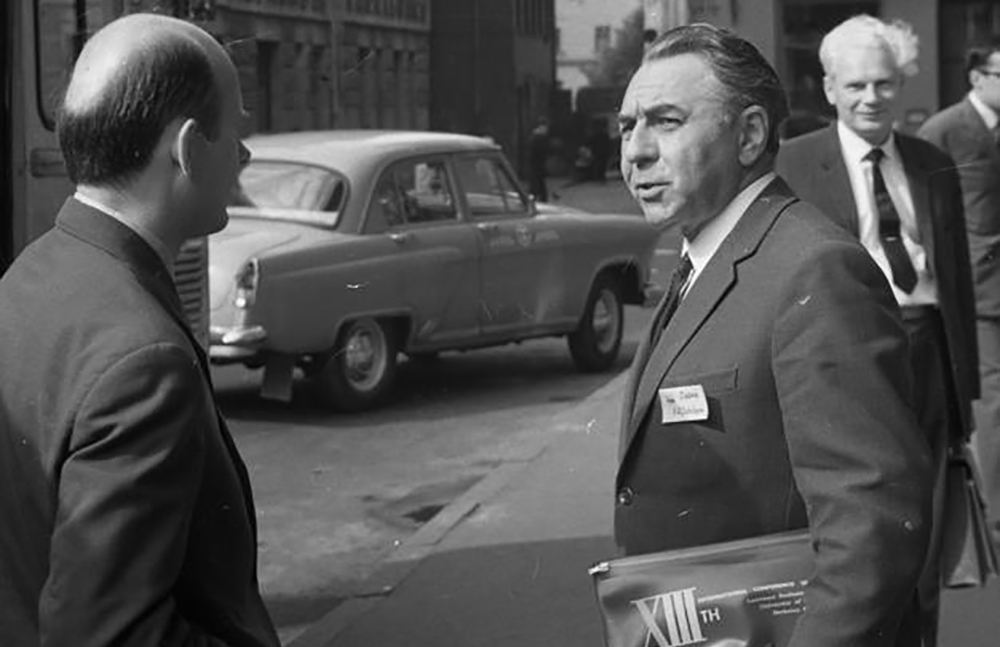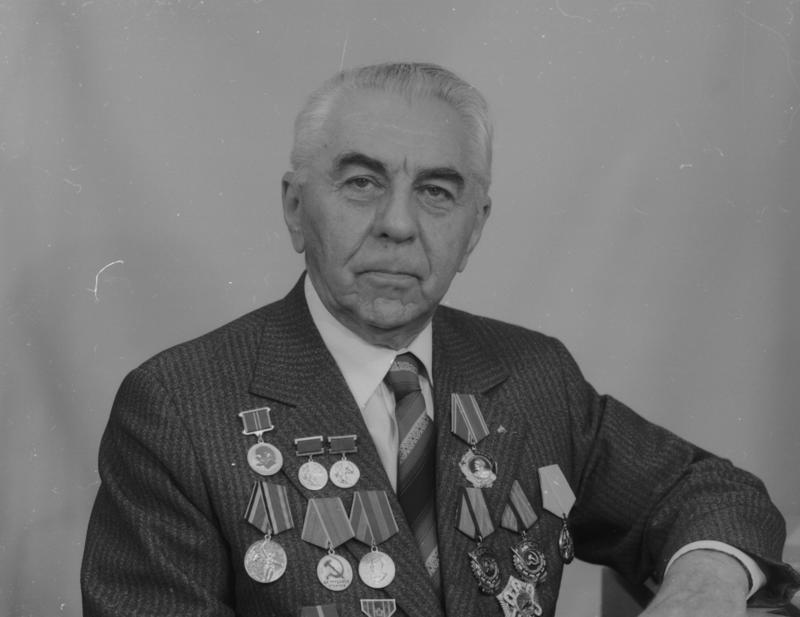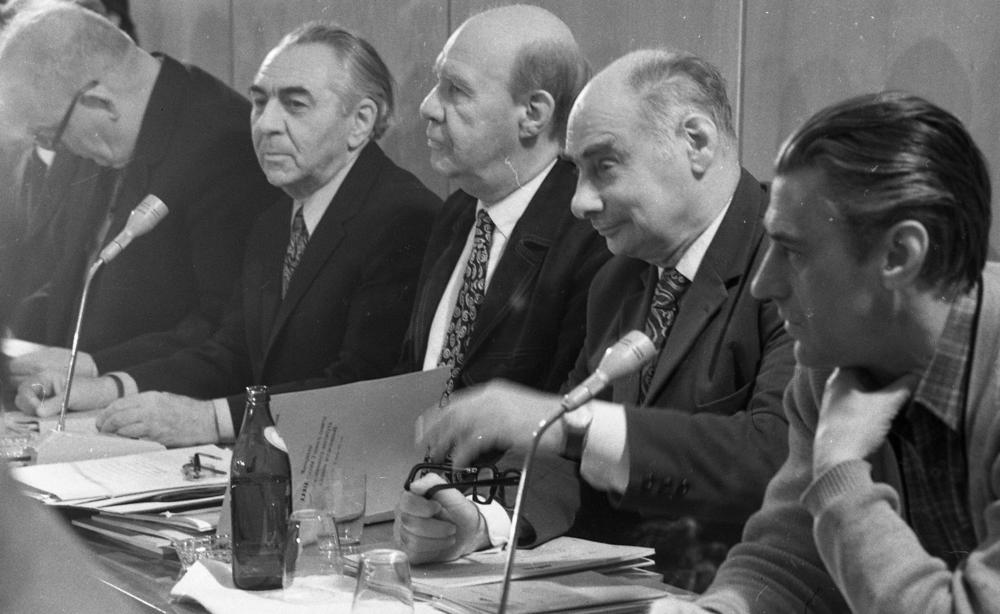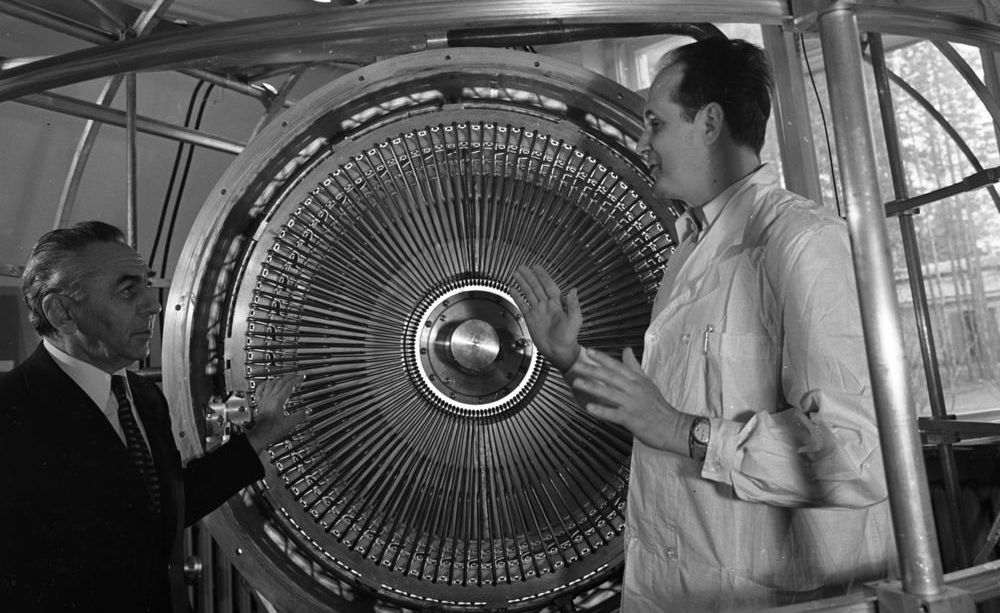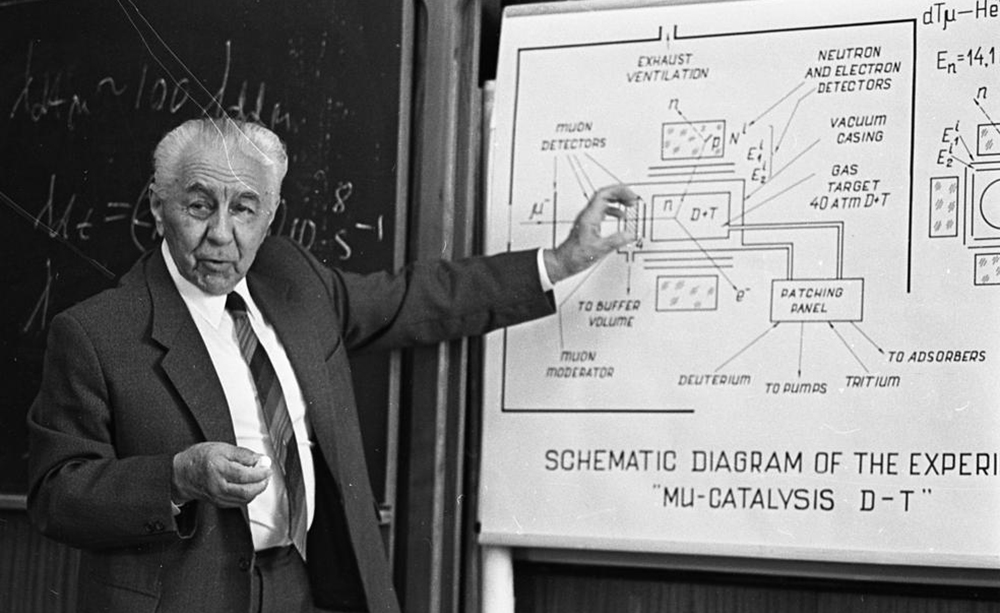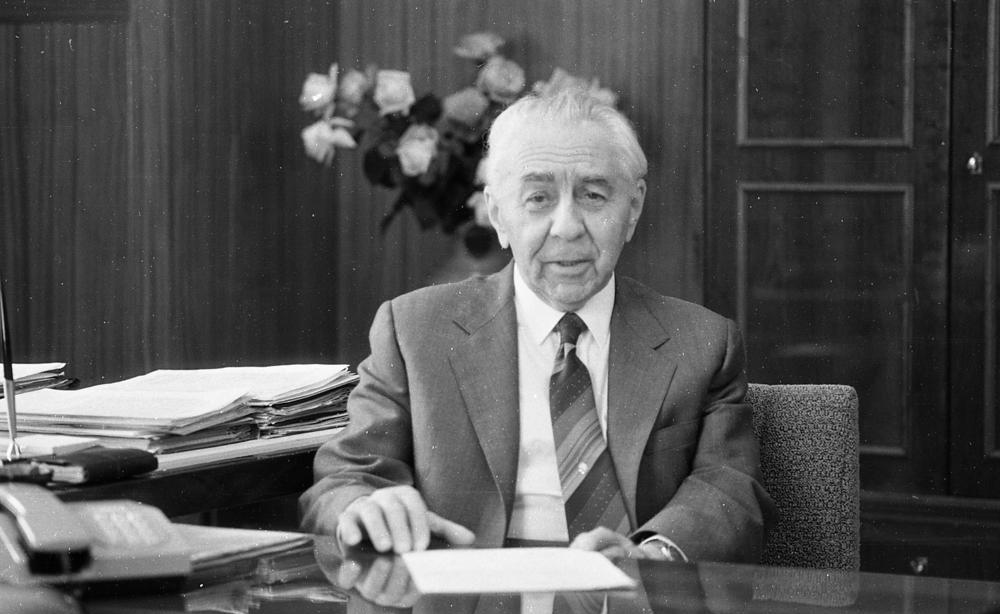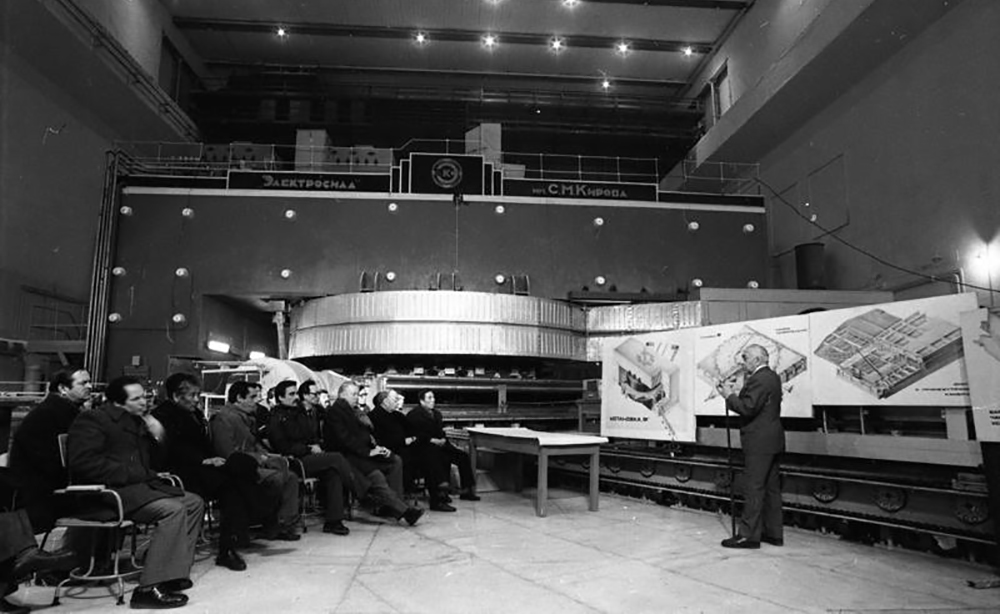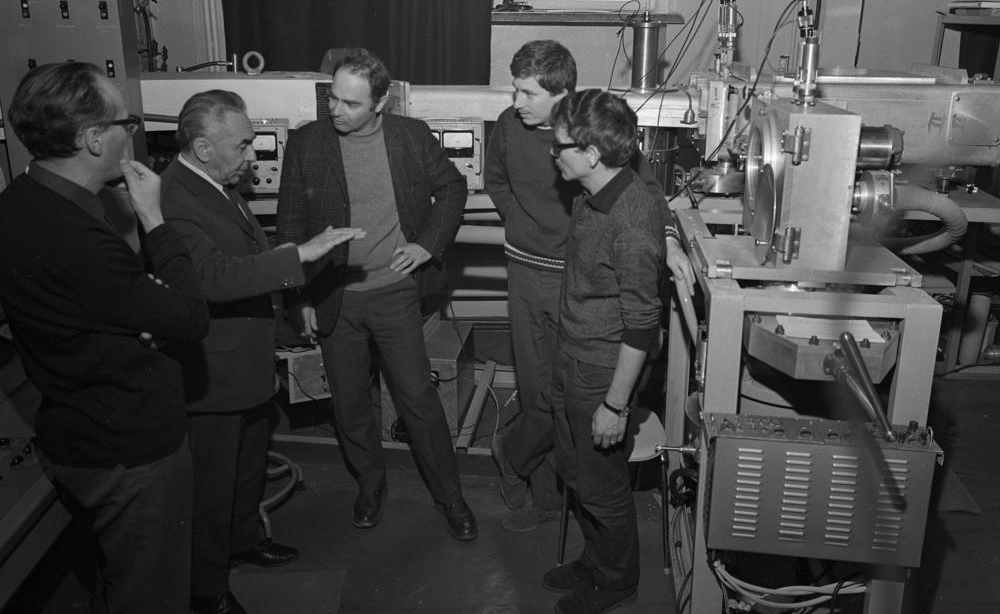110th anniversary of birth of Venedikt Dzhelepov
News, 12 April 2023
12 April marks the 110th anniversary of the birth of one of the foudners of the Joint Institute, an outstanding physicist, science organizer, and the first Director of the Laboratory of Nuclear Problems JINR Venedikt Petrovich Dzhelepov (1913 – 1999).
Professor, a Corresponding Member of the USSR Academy of Sciences and RAS, V. P. Dzhelepov held the post of the DLNP Director for 33 years (1956–1989) and stood at the origins of the Institute and the Laboratory, as well as the city of the JINR’s location Dubna. He arrived at the Hydroengineering Laboratory of the USSR Academy of Sciences on the site of future Dubna in 1948 and was appointed the Deputy Head of the M. G. Meshcheryakov’s Laboratory. Later, after it got the name of the Institute of Nuclear Problems of the USSR Academy of Sciences, he was appointed the Deputy Director for Scientific Work of the Institute.
In 1937, he graduated from the Leningrad Polytechnic Institute. He met Igor Kurchatov within the walls of his alma mater. In 1939, after completing military service in the army, Venedikt Petrovich joined him at the Cyclotron Laboratory of the Radium Institute of the USSR Academy of Sciences. There Venedikt Dzhelepov participated in the launch of the Europe’s first deuteron cyclotron, but six months later, he was mobilised again to participate in the Soviet-Finnish War. In 1941, he started his work in Leningrad Ioffe Physical-Technical Institute (LIPTI), where he worked under the guidance of Abram Alikhanov and Igor Kurchatov on commissioning of the 12 MeV cyclotron. Since September 1941, during the evacuation of the institute in Kazan, he was developing a fire director radar as part of the radiolocation laboratory. Then, in August 1943, Dzhelepov was among the first ten members of Laboratory No. 2 of the USSR Academy of Sciences (now the NRC “Kurchatov Institute”), organized by Kurchatov in 1943 to solve the so-called uranium problem. In the USSR atomic project, he worked in a group with Georgy Flerov. Later, Dzhelepov was appointed the Deputy Head of Laboratory Sector No. 2.
Dzhelepov had the experience in launching the first Soviet cyclotron of the Radium Institute of the USSR Academy of Sciences and constructing the 12 MeV proton cyclotron in Leningrad Physicotechnical Institute. So, the scientist played one of the most important roles in the launch of the first Soviet Synchrocyclotron of the Institute of Nuclear Problems of the USSR Academy of Sciences in 1949 and its subsequent reconstruction to a record energy of 680 MeV in 1953. He is by merit considered one of the founders of high energy physics as a research field in the Soviet Union.
After the foundation of the Joint Institute for Nuclear Research in 1956, the Institute of Nuclear Problems of the USSR Academy of Sciences was transformed into the Laboratory of Nuclear Problems JINR. Venedikt Dzhelepov was elected its Director. He taught a significant number of young scientists. Their works later became widely known to the international scientific community.
Throughout his entire life, the scientist combined various positions as a talented science organizer and public figure. For example, he had been the Deputy Academician-Secretary of the Department of Nuclear Physics of the USSR Academy of Sciences since 1967. In 1962 – 1970, he chaired the expert commission of the USSR Higher Attestation Commission on Physics and Astronomy. He was a member of international commissions in the fields of particle physics, accelerator physics, and scientific and technological cooperation. Venedikt Petrovich repeatedly headed scientific delegations of the USSR and JINR at major international physics forums. He had been a member of the editorial board of four physics journals, including international ones, for many years.
Scientific works by Venedikt Petrovich are devoted to nuclear physics, physics of elementary particles, accelerator physics and technology. He carried out the study on elastic neutron scattering at neutrons, which made it possible to prove the symmetry of nuclear forces at high energies. He was the first to investigate the spin dependence of the exchange forces for a neutron-proton system. Studying the formation of pions in nucleon collisions, he confirmed the charge independence of nuclear forces. He conducted a wide range of studies on pion-nucleon interactions at high energies. The scientist discovered the electronic decay event of negative pions and studied the phenomenon of the negative muon capture in hydrogen gas. He determined the probabilities of these processes that was important for confirming the universality of the weak interaction. He discovered a number of new muon catalysis reactions. V. P. Dzhelepov found a resonance dependence of the formation probability of mesomolecules of heavy hydrogen isotopes. He co-authored the discovery “The pattern of resonant formation of muonic molecules in deuterium” (1965).
Venedikt Petrovich was one of the leaders of the work on the creation of the world’s first accelerator with a spiral variation of the magnetic field, as well as an electron model of a relativistic strong-focusing cyclotron. The latter proved the possibility of obtaining accelerated proton currents in such cyclotrons in hundreds of milliamperes at the energies around 700 – 1,000 MeV.
V. P. Dzhelepov was one of the first to pay attention to the possibility of using high-current isochronous cyclotrons to control subcritical assemblies and create safe nuclear power and facilities for nuclear waste transmutation on this basis.
The scientist pioneered in the USSR the use of high-energy protons and other charged particles for the treatment of malignant tumours. In 1967, Venedikt Petrovich initiated the modernisation of the Synchrocyclotron into the Phasotron and research on proton therapy, which made it possible to treat cancer patients. In 2000 – 2013, more than 1,000 patients underwent the irradiation course in the DLNP Medico-Technical Complex.
In 1978, with the support of Dzhelepov, the biological research sector was established at DLNP. In 1988, the Department of Biophysics of DLNP was organized. In 1995, Department of Radiation and Radiobiological Research was created. After the death of the scientist in 2005, the Laboratory of Radiation Biology was established.
Contemporaries of Venedikt Petrovich note that he was a natural leader, at the same time showing a deeply humane attitude. Colleagues warmly noted his energy and optimism, which he had until the very last days, curiosity and creativity.
DLNP JINR Directorate Advisor Nikolay Russakovich, who worked at the laboratory with Venedikt Dzhelepov for many years, said the following about him, “He was, strange as it may sound, a professional director. He was a man who led this laboratory for a very long time, more than 30 years. Along with that, DLNP always kept a friendly atmosphere, which stimulated the development of talents. He was a leader whose decisions those around him never questioned. He was also a humble person, always thinking about the team. It was impossible to imagine him doing something in his personal interests. He had a remarkable ability of looking at a problem on a global scale, from the point of view of the state rather than that of the Laboratory director. He was able to switch easily. One minute he is discussing some personnel problem or speaking at a party meeting and a half an hour later in his office he is talking just as vividly and passionately about something else”.
Venedikt Dzhelepov received two State Stalin Prizes of the USSR, numerous orders and medals of the USSR and a number of other JINR Member States. The Laboratory he headed now bears his name. One of the streets in the city of JINR’s location, Dubna, is named after Dzhelepov. A monument to two great scientists of DLNP Bruno Pontecorvo and Venedikt Petrovich was built in the city. Since 2010, the V. P. Dzhelepov Prize for outstanding achievements in the field of experimental and theoretical research aimed at solving applied problems using nuclear physics methods has been awarded at DLNP JINR. In addition, for more than twenty years, the Joint Institute for Nuclear Research has been holding a tennis tournament in Dubna. It is named after the Dzhelepov cousins, Venedikt Petrovich and Boris Sergeevich, who was also a prominent physicist. As lovers of the sport, they made it popular in Dubna and initiated the construction of the JINR tennis courts.
Materials for the 110th anniversary of Venedikt Dzhelepov on the DLNP JINR website
